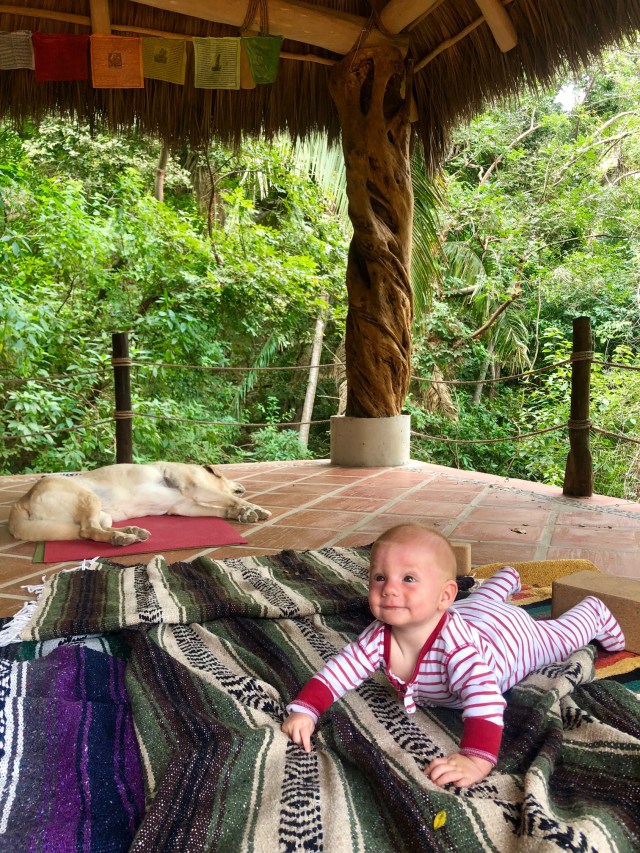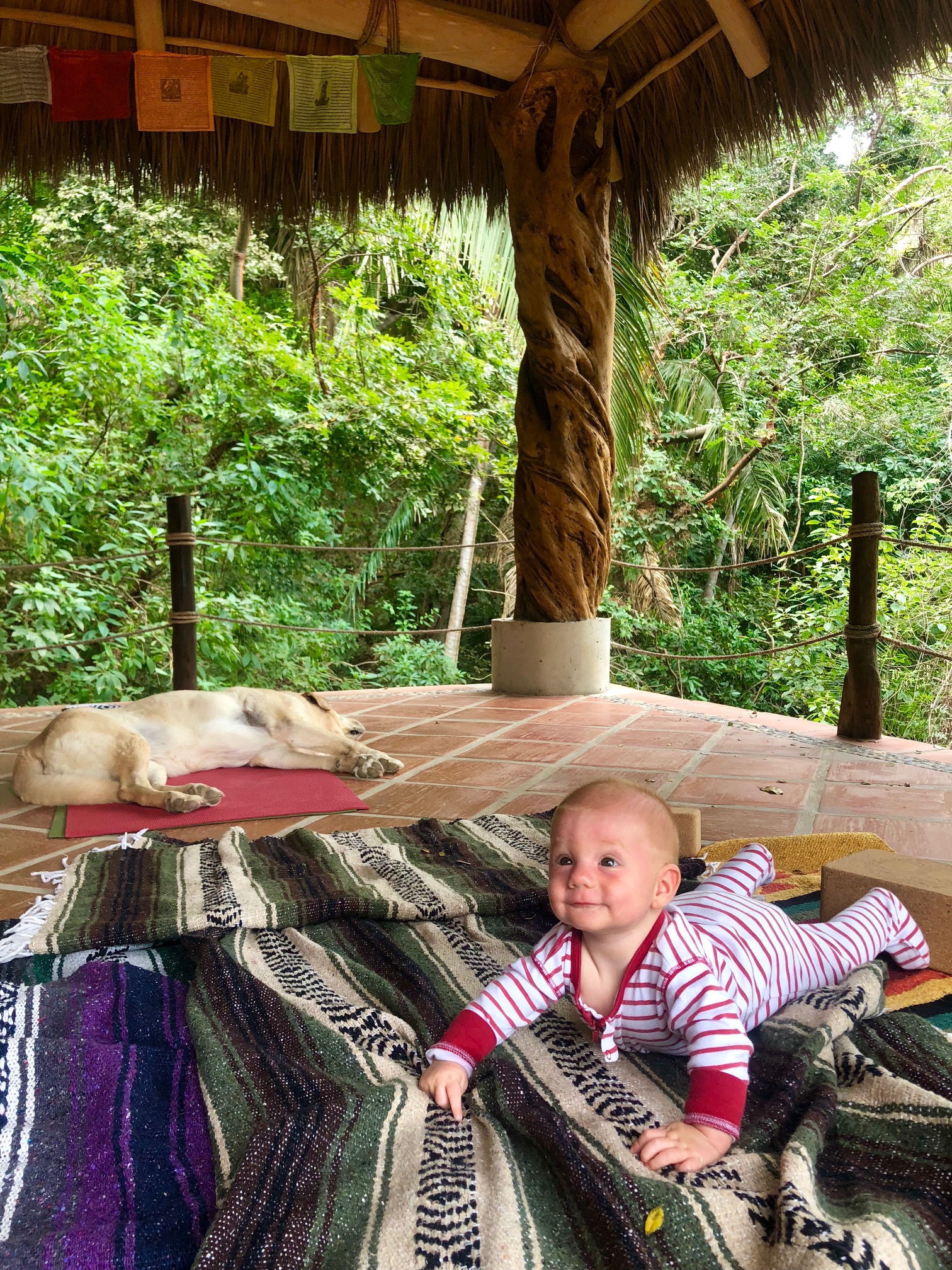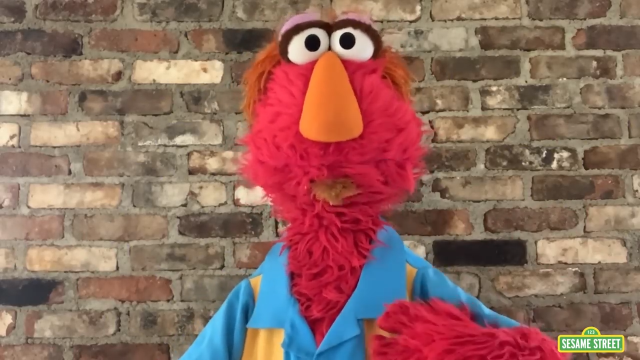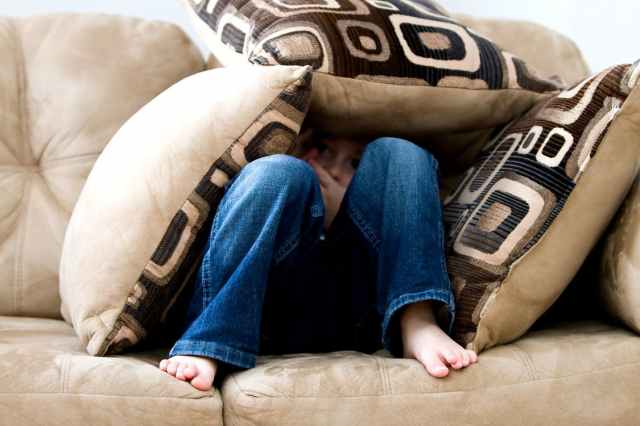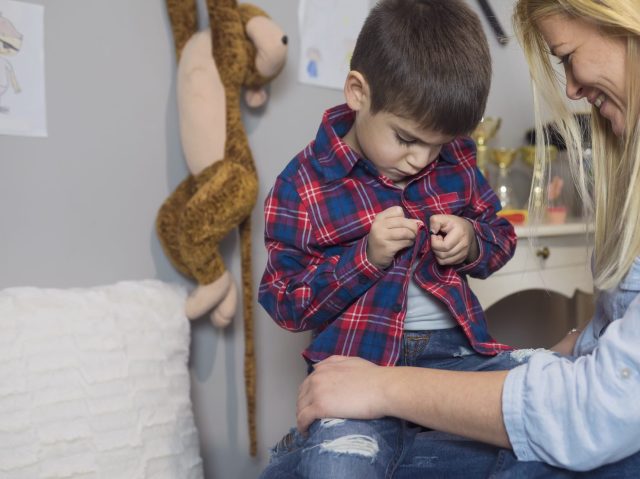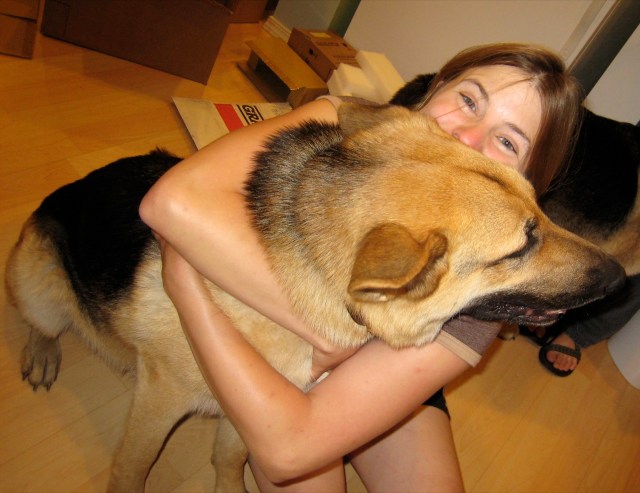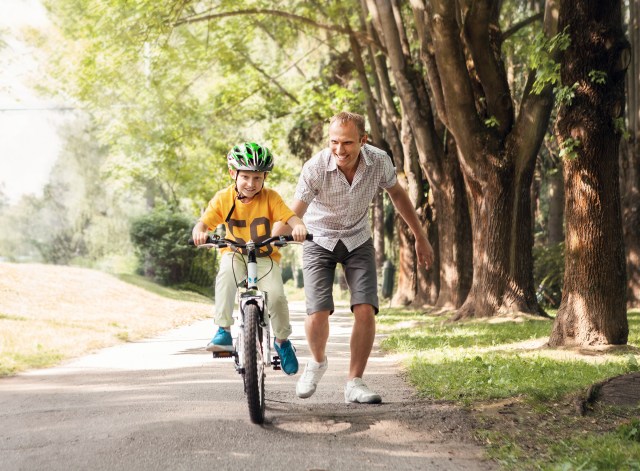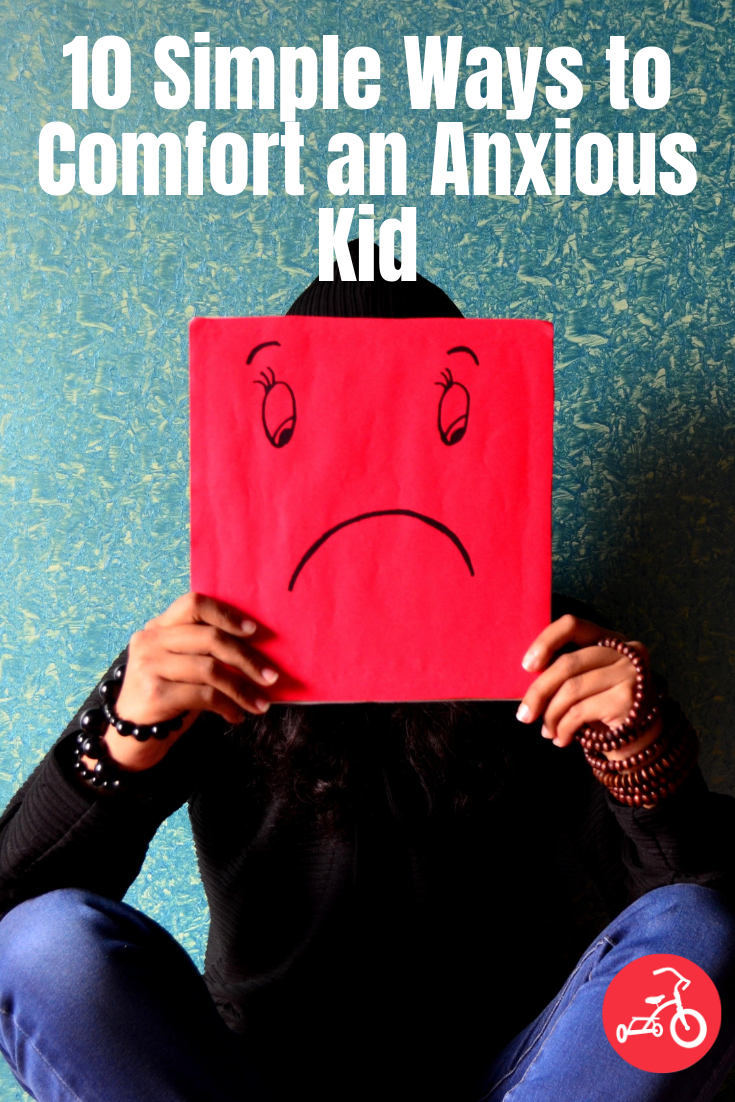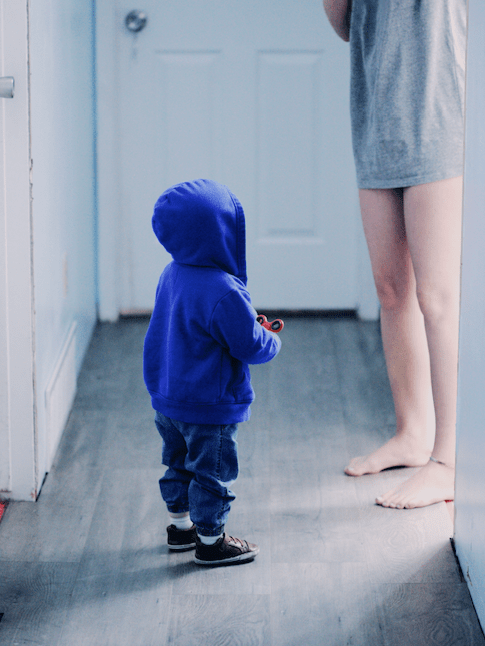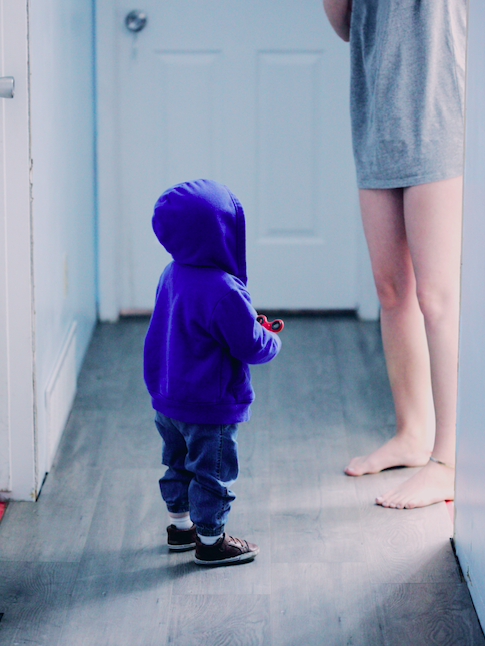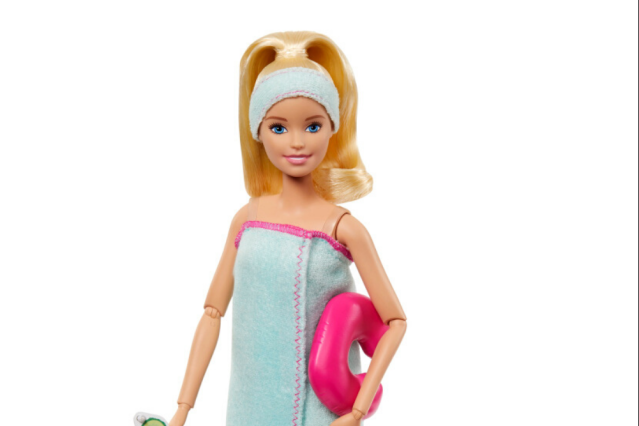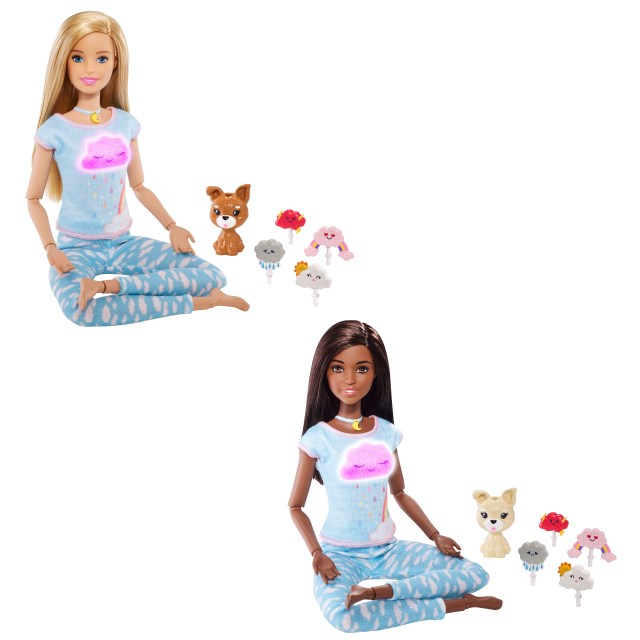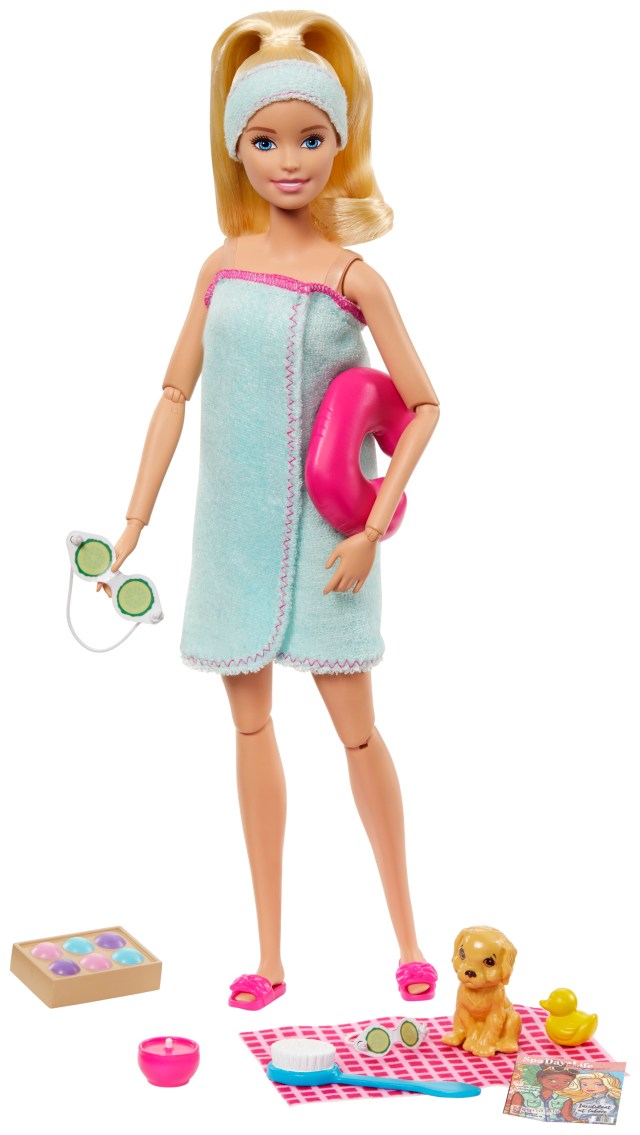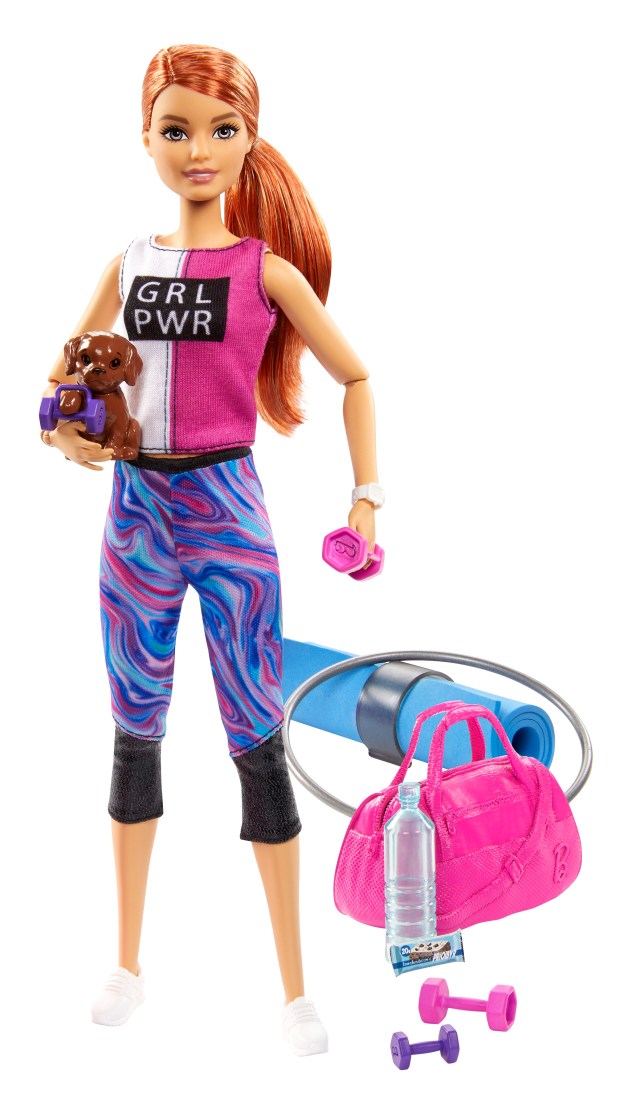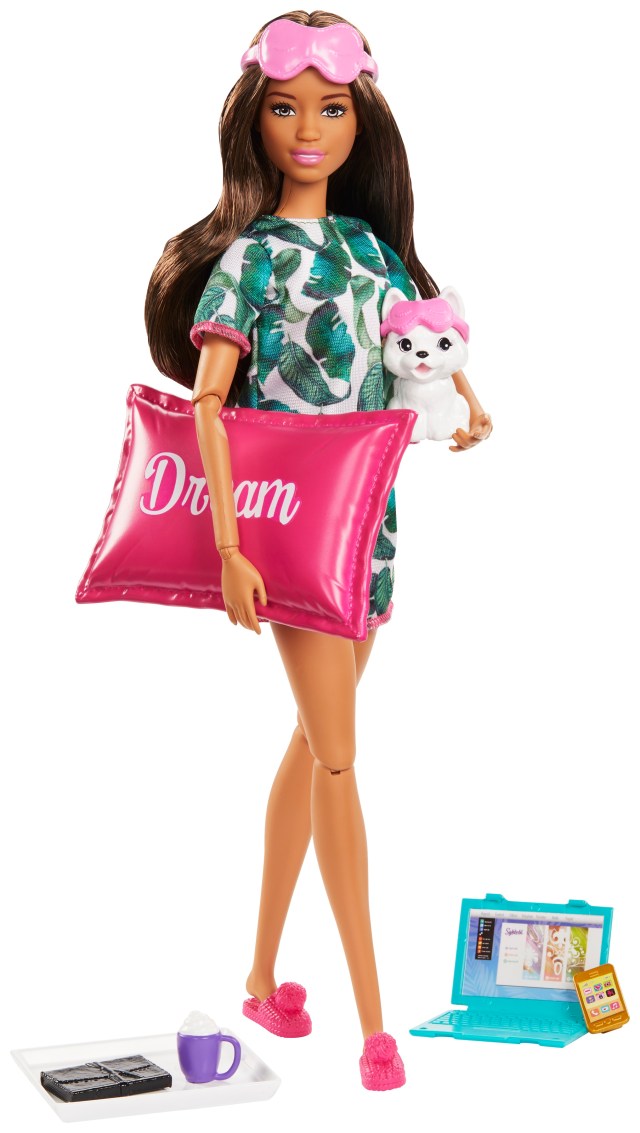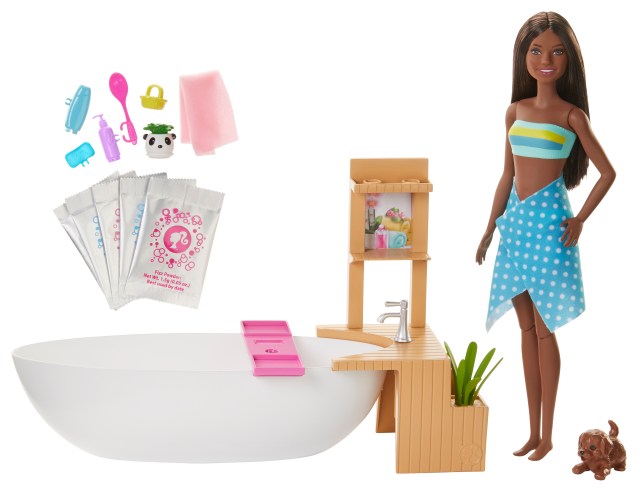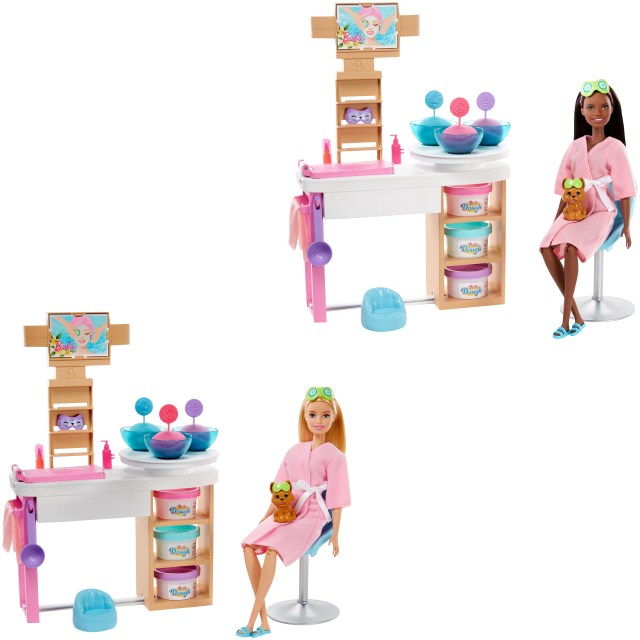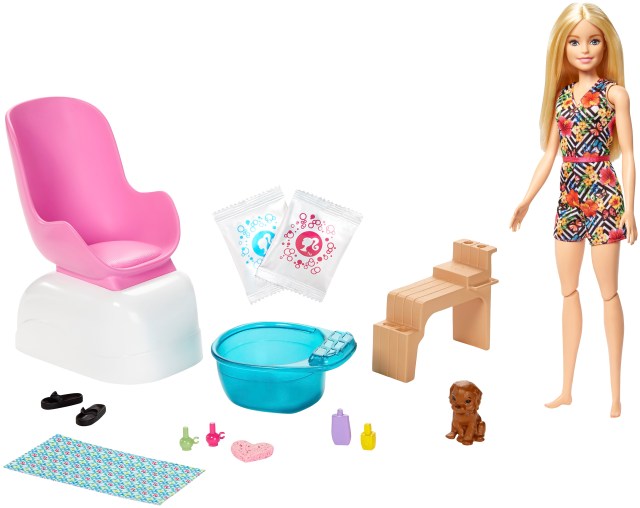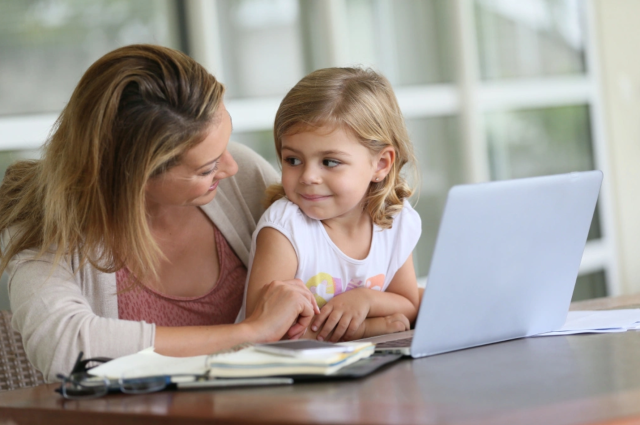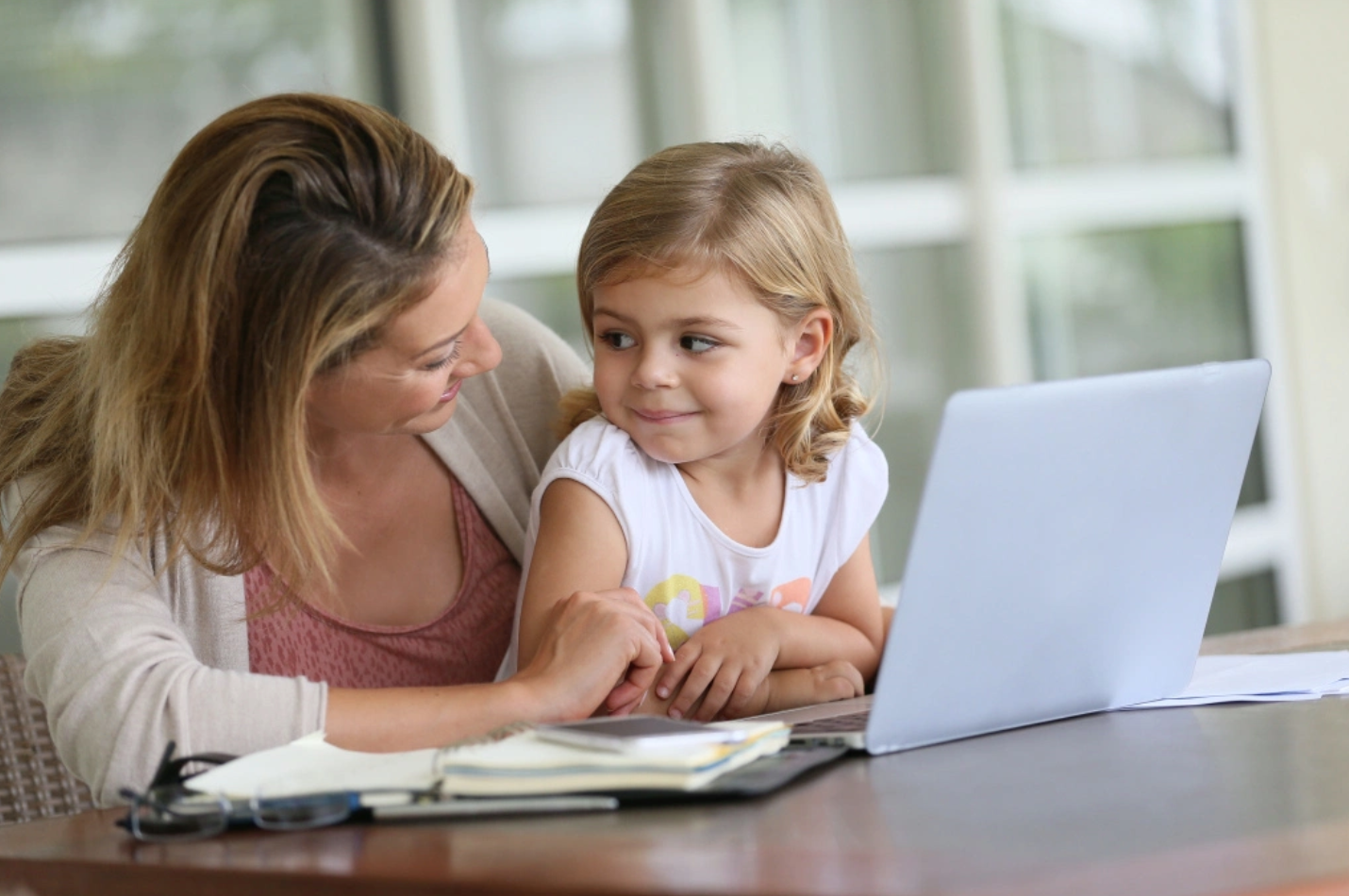Stop, Drop & Breathe

When you start to get revved up, stress hormones flood your body and you go into fight or flight mode. According to renowned parenting expert and author of Peaceful Parent, Happy Kids, Dr. Laura Markham, if you stop what you're doing and take a few deep breaths, it sends your body a message that it's not an emergency and you'll begin to calm down. For maximum effectiveness, she recommends practicing this technique regularly.
Top tip: Each time you inhale, breathe air right into your belly so that it expands.
Stick Your Hand Under the Faucet

Yes, handwashing is uber-important now more than ever, but it's also a great way to soothe away stress. According to Dr. Markham, just as baths are great for calming kids and toddlers, the sound and sensation of running water over your hand can soothe away stress. Try these handwashing song-alternatives to know how long to do it.
Tip: It can also be helpful to splash cold water over your face as this will stimulate the vagus nerve, which will slow your heart rate down.
Hug It Out
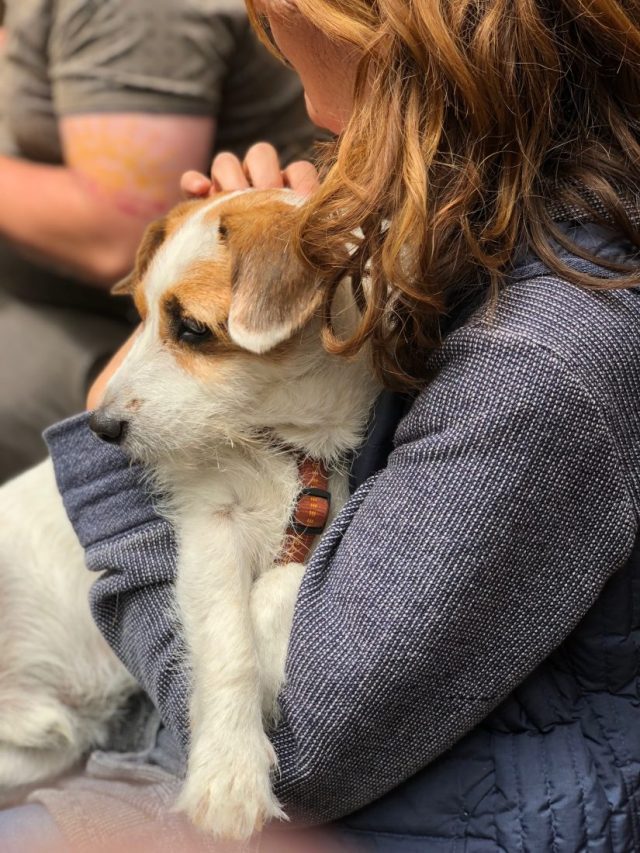
Social distancing aside, if your kids are pushing your buttons and you're about ready to explode, hug your partner or even your dog. According to experts, hugging for at least 15 seconds triggers a release of oxytocin (known as "the love drug") in your brain, which makes you feel calmer, happier and more connected.
Obviously, because of the spread of Coronavirus, this one comes with a caveat.
Reach for Some Calming Drops

For fans of alternative medicine, there are plenty of calming drops out there that are designed to combat stress. Probably the most famous of them all is Bach Rescue Remedy, which was created by Dr. Bach to deal with emergencies and crises. Made from spring water infused with flowers and brandy, it is said to remove negative emotions and restore balance to the mind and body. The bottle is small so you can pop it in your handbag. When you next arrive late for a school concert and have to stand at the back of the auditorium, simply put a few drops under your tongue to restore your inner calm.
Scream into a Pillow
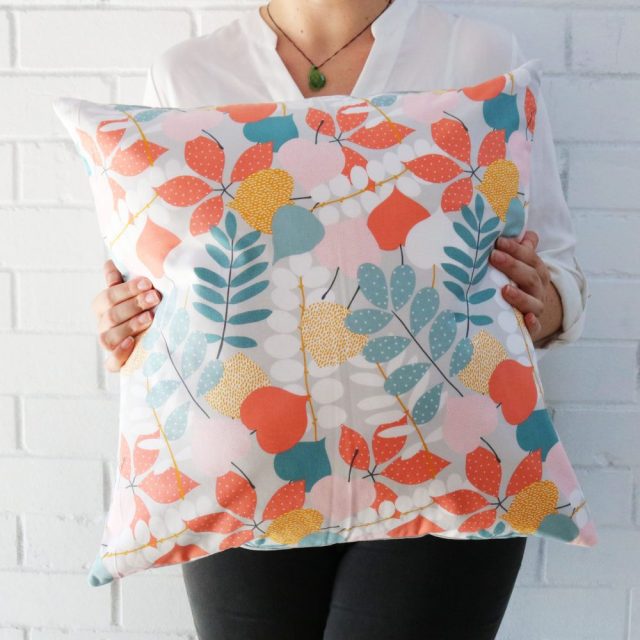
There are times when moms feel like screaming and that's okay. But, instead of screaming at someone, which will only make you, them and everyone else feel bad, head to the bedroom, plant your face on the closest pillow and scream, shout or curse as loud as you can. This is a great way of relieving tension and no one will hear you. This has become such a big thing that you can even buy scream pillows on Etsy.
Press on Your Pressure Points

Acupressure is a form of traditional Chinese medicine designed to promote healing and relaxation. Our bodies are covered in pressure points and some of them are associated with stress relief. When these pressure points are stimulated, it triggers the brain to release endorphins, increases blood circulation and relieves muscle tension. This is something you can easily do by yourself. There is one between your eyebrows and another on the fleshy area between your thumb and forefinger. All you need to do is press firmly or massage the area for several seconds to reduce stress. This is a good one when you're stuck in traffic and seething or sitting at your desk.
Come Up with a Mantra

When stress levels are high, many people swear by repeating mantras (or affirmation phrases) to rediscover their inner calm. While this method might sound a bit whacky, Dr. Markham suggests writing down a bunch of phrases on post-it notes and sticking them around the house to help you decide which one you are most comfortable with. Examples of stress-relieving mantras include "I can handle this", "It's not an emergency," or "He/she is acting like a child because he/she is a child."
Dance Like No One's Watching

Both listening to music and dancing are great ways to de-stress. Another top tip from Dr. Markham is to stop whatever is making you stressed, put on your favorite tunes and dance or jump around. Getting the kids to join in too is even better as this is also a great way for them to shake off any angst they have accumulated throughout the day.
Step Outside

Perhaps your kids are fighting yet again and your blood pressure is rising or you've got so much to do and don't know where to start. An easy solution to feeling less stressed and overwhelmed is to go outside. Close the door behind you, breathe in some fresh air, look up at the sky and all around. If there are any flowers, then smell them and listen for sounds such as birds tweeting. The simple act of getting outdoors and focusing on your senses will quickly distract your mind and help you to feel more relaxed and re-energized.
Eat Chocolate

Despite what you might think, eating chocolate is not all bad. When your stress levels are at the max, eating a piece of dark chocolate can help. According to two recent studies at Loma Linda University, eating dark chocolate with a minimum of 70% cacao can reduce stress as well as improve memory, immunity and mood. The only challenge is to not eat the whole bar!
Strike a Pose
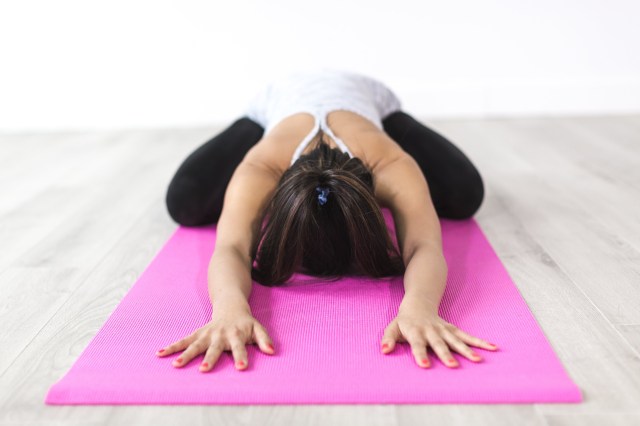
By this we mean a yoga pose. Yoga is known to do wonders for calming the mind and body. It helps you slow down, clear your mind and focus on one thing, so you soon feel more relaxed. A really easy but effective pose that's great for reducing stress and anxiety is Child's Pose, also known at Balasana. This video on Yoga Journal shows you how to do it properly.
—Janine Clements
RELATED STORIES
10 Little Ways to Treat Yourself Every Day
Common Mom Ailments & How to Solve Them
Simple Things Moms Can Do Every Day to Stay Healthy
Because I Said So: Hilarious Things Only Moms Say






